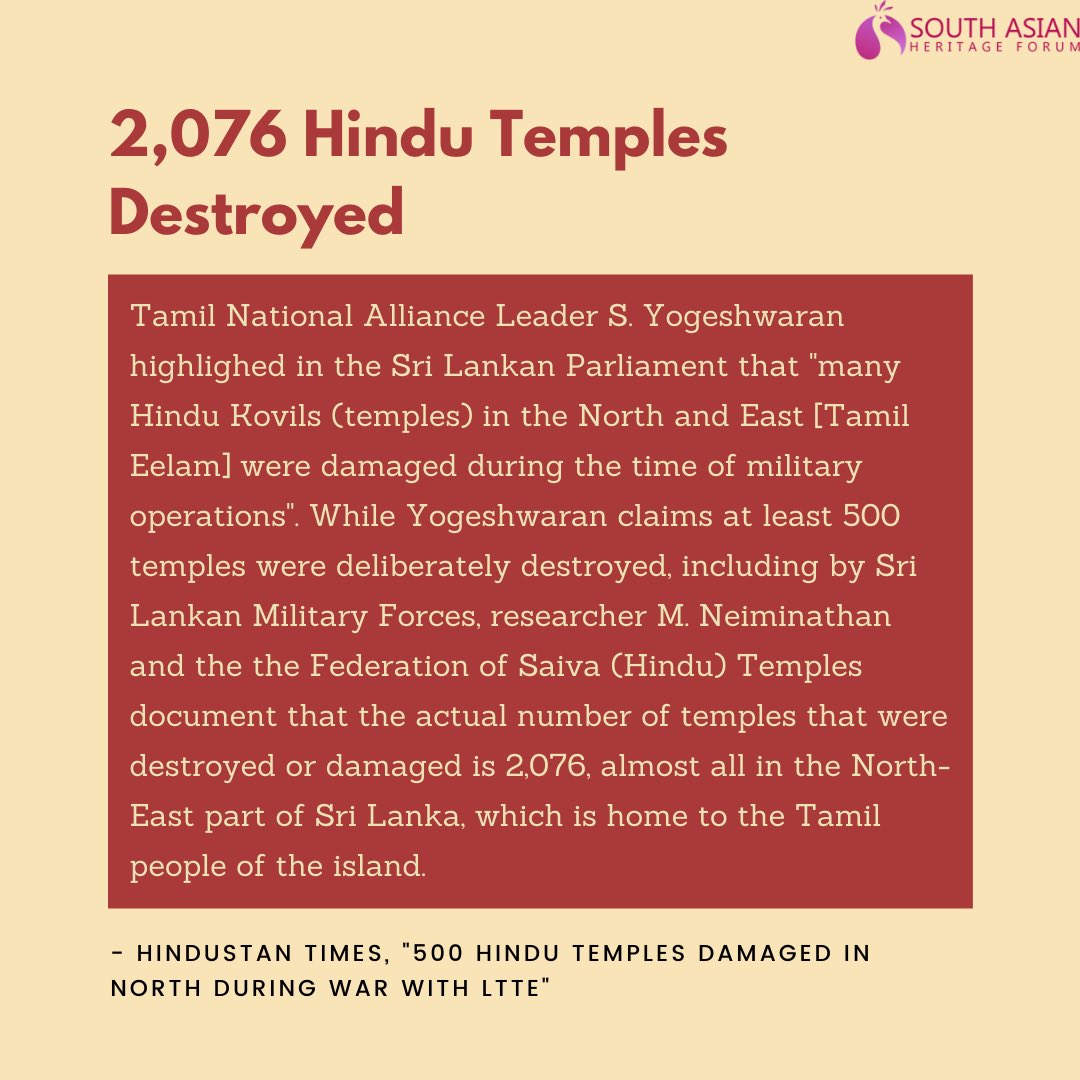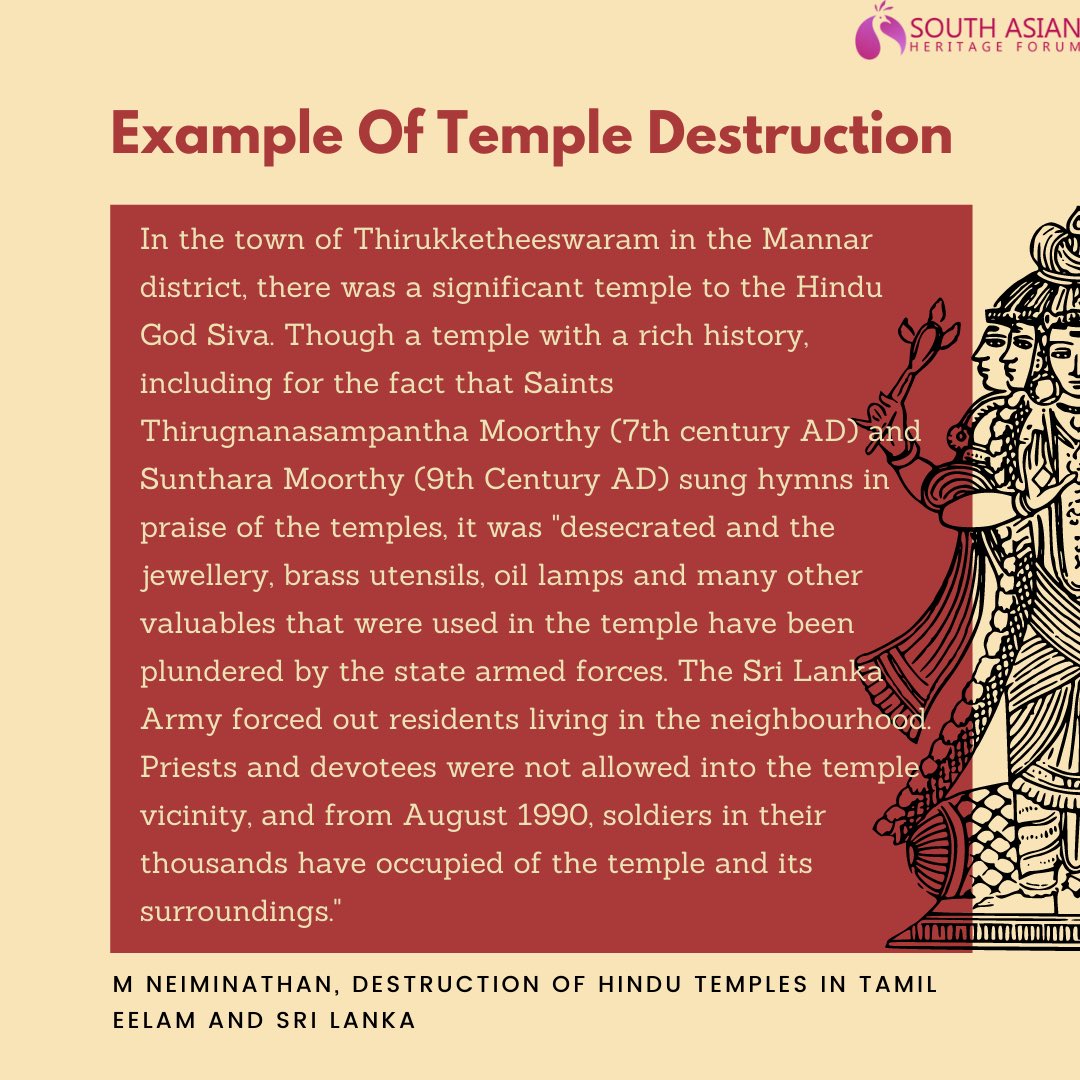
A thread on some of the horrific crimes committed by Mughal Emperor, Aurangzeb (1658 AD-1707 AD), and why they should not be whitewashed by scholars who are trying to push forward an extremely harmful and bigoted political agenda:
The re-imposition of the discriminatory Jizya tax on non-Muslims by Aurangzeb in 1679 is seen as a massive turning point in the history of the Mughal Empire, and as marking the culmination of religious bigotry, which lead to an increase in the already extreme alienation of non-
Muslims in the Mughal Empire. Although the non-Muslim population overall was impacted by this humiliating tax, the ones who suffered the most were Dalits and other much poorer 'Lower-Caste' communities who, often, were not able to pay the tax and were threatened by death or
forceful conversion to Islam if not able to do so. Further, Aurangzeb discriminated against Hindu Merchants by taxing them at twice what Muslim Merchants were taxed at. The Ma'asir-i-'Alamgiri, an annal of events that occurred during Aurangzeb's reign, even explains how the
entire aim of the imposition of Jizya and the Islamic Law under Aurangzeb was to spread Islam and overthrow the practices of the 'Infidels'. 
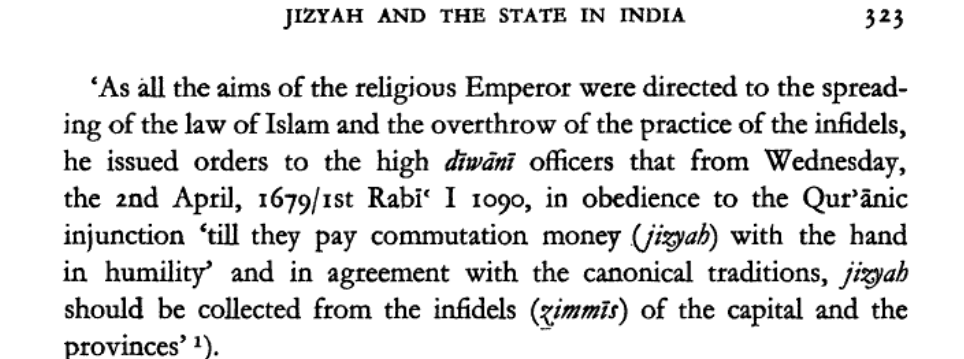
Will Durant in his book: 'Our Oriental Heritage: The Story of Our Civilization', writes that Aurangzeb didn't care much for the arts, especially those made by people of religions that were not his own, he was hell bent in eradicating those 'heathen' monuments. In a span of a-
year (1679-1670), he had destroyed around 252 Temples in Rajasthan alone, and to add to this, he forbade Hindus from public worship due to his intolerance of the indigenous faiths of India, a land in which where he had terrorized millions. 
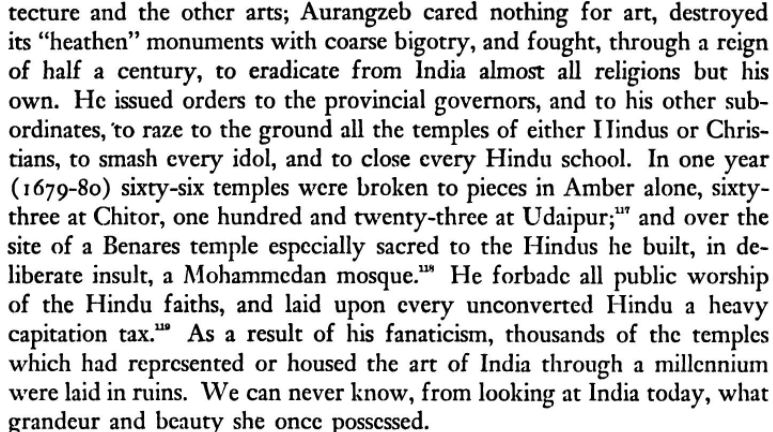
One of the Temples that Aurangzeb had destroyed was one of that of Lord Shiva, named Kashi Vishwanath in Benares, Uttar Pradesh. The Ma'asir-i-Alamgiri gives evidence for this occurring in 1669 AD: 

Another Shiva Temple that had been demolished was that of Somnath in Gujarat some time in his reign and possible again in 1702. 

Apart from the mass destruction of Temples and subjugation of the native population through oppressive laws used during his administration, he also commit mass genocide, rape and forceful conversion of the majority Hindu population according to Kenneth Pletcher in his book: The-
History of India.
There are multiple examples of how Aurangzeb treated those who would not convert to Islam, a notable example is that of Dharmveer (Protector of Dharma) Chhatrapati Sambhaji Maharaj, the successor to Chhatrapati Shivaji Maharaj of the Maratha Samrajya (Maratha Empire). Sambhaji
Maharaj was captured by Mughal forces after the the Battle of Wai in 1687, as part of the Mughal-Maratha wars, after his camp was surrounded. Sambhaji Maharaj challenged Aurangzeb multiple times that he would not convert to Islam even if Aurangzeb bribed him with his daughter,
due to this, Sambhaji Maharaj was tortured to death by having his tongue cut off, nails pulled off, skin torn into shreds using metal tiger claws, his eyes gouged out and finally being beheaded in 1689. 

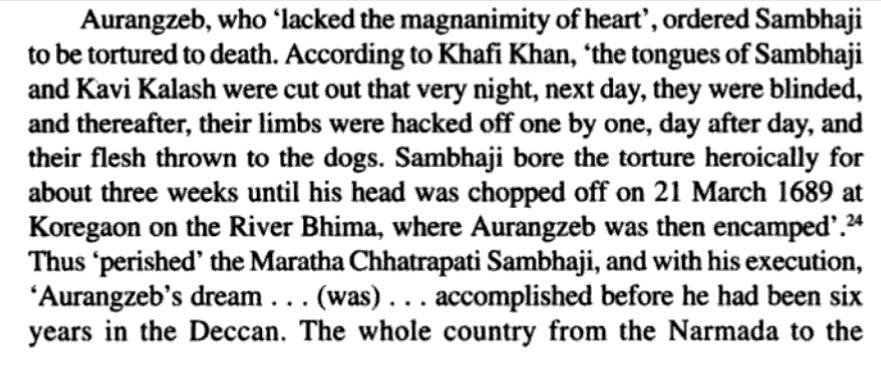
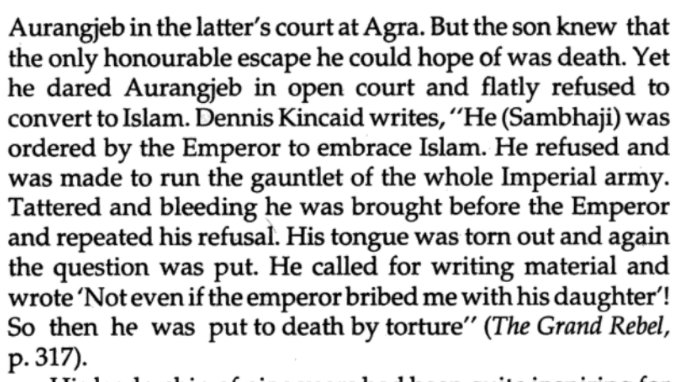
The whitewashing of the crimes committed by this horrible and disgusting historical figure is simply dishonest, and we at SAHF will continue to speak out against this academic dishonesty by which indigenous voices are being supressed.
• • •
Missing some Tweet in this thread? You can try to
force a refresh


